The summer months have slid away and with them the ability to ignore spotty pathway lighting. Getting around the garden, and even to the front door, can be challenging when days get shorter and darkness sets in before dinner.
This is the season to enhance safety, convenience, and curb appeal with effective path and walkway illumination. Here’s what you need to know to create a well-lit path to (and around) your home.
 Above: Placing lights on alternating sides of a path creates a sense of balance and visual interest. Photograph via Delta Light.
Above: Placing lights on alternating sides of a path creates a sense of balance and visual interest. Photograph via Delta Light.
What defines a pathway light?
Pathway lights do what they advertise: offer illumination to guide you along an outdoor path or walkway.
Above: Generally speaking, lights that are best for this job shine a gentle glow downward toward your feet, providing direction without distracting glare. Photograph courtesy of WE Design, a member of the Remodelista Architects and Designers Directory.
Above: Bollard lights lead to the entry, while also illuminating the garden, of a Rye, New York project by Gunn Landscape Architecture, a member of the Remodelista Architect/Design Directory.
What are the benefits of pathway lights?
In addition to leading the way in the dark, pathway lights offer other benefits, including:
- Home security.
- Protection of path border plants from heavy-footed walkers.
- Marking path boundaries.
- Highlighting low level prized garden plants.
- Added curb appeal.
- Ambient lighting for garden entertaining.
Above: Strategically placed pathway lights lead up outdoor stairs. Photograph via Delta Light.
What are the different styles of pathway lights?
There are several varieties of fixtures effective for lining and lighting walkways. The most common types put to work on pathways are garden lights, downlights, bollard lights, and flush lights.
Garden Lights
Above: Traditional garden lights in a Marin County entry by Pedersen Associates Landscape Architecture.
Topped with a canopy that reflects light down onto adjacent paths and garden beds, garden lights typically stand between 18 and 24 inches tall.
Downlights
Above: Directionally focused downlights affixed to a pole (such as the low-voltage LED Volt Innovator Top Dog Pathway Light; $49.97 at Volt), wall, or adjacent tree offer effective pathway lighting. The spot design provides a targeted light source with little side glare. The farther away from a path, the larger the area of illumination.
Bollard Lights
Above: A bollard garden light from Belgian lighting company Nyche.
Bollard (or pillar) lights have a 360-degree light spread and can illuminate garden beds and walkways simultaneously. Because they are a brighter light source, they are often placed at the start or end of a path as a focal point and to draw walkers in the right direction. Be careful of glare. Consider low-wattage bulbs or bollards with a solid top, to prevent the light from shining upwards.
Flush Lights
Above: Flush lights set in a path integrate soft but practical lighting in an urban Chicago garden by Coen + Partners, members of the Remodelista Architect/Design Directory.
Installed in the surface of a path, flush lights softly illuminate up and outwards, without the intensity of a spot light.
Any tips for pathway lighting placement and selection?
- Space fixtures from 10 to 15 feet apart to create pools of light to guide from one point to the next, rather than a constant stream of light.
- Stagger lights on both sides of a path to create a sense of balance and avoid the runway look.
- Consider setting lights slightly back from a walkway. They will light the way, and also highlight adjacent plantings rather than your pathway material.
- Pay attention to the height of the lights to scale with the surrounding terrain. If they are set in foliage, lights need to be slightly taller than plantings.
- Be careful not to overlight. Use low wattage bulbs for subtlety (it is easy to overdo it).
- Select fixtures that direct light toward the feet, not the eyes.
Above: Stairway lighting provides an ample glow for walking, highlighting the garden, in a project by Growsgreen Landscape Design, a member of the Remodelista Architect/Design Directory.
Above: The Belgian-made Q-Bic Outdoor Path Light is attached to a small stainless steel and wood pillar and swivels so it can be adjusted to meet the lighting needs of the terrain; $555 at Lightology.
Above: Uplights create interest on a wall along a path in a project by Arterra Landscape Architects, a member of the Remodelista Architect/Design Directory.
How do I power my pathway lights?
Unless they are solar-powered, outdoor lights need to be connected to an electric power source. That can be achieved by plugging into an outdoor power socket, hard wiring to a full 120V electric source, or installing a low-voltage transformer. From a safety, cost, and easy installation, low voltage is the way to go. Low-voltage transformers change the electric current from 120V to 12V, ideal for outdoor garden use because of the wet conditions. Electricity and water are typically a bad combination.
Using regular electrical power requires the wiring to be buried at least 18 inches deep or to be encased in a conduit, while low-voltage systems can plug into an outdoor socket. Then the wires can be easily buried under soil or gravel. We recommend consulting with an electrician or outdoor lighting professional for guidance or installation.
Where can I buy outdoor pathway lighting?
Above: Designed with a natural feel but with a conscious manmade geometry and technology, the Oluce Ela 308 Outdoor Path Lamp is $750 at Surrounding Modern Lighting and Interiors.
See our earlier features:
- 10 Easy Pieces: Landscape Uplights.
- 10 Easy Pieces: Pathway Lighting.
- 10 Easy Pieces: Black Wharf Lights.
- 10 Easy Pieces: Outdoor Nautical Bulkhead Lights.



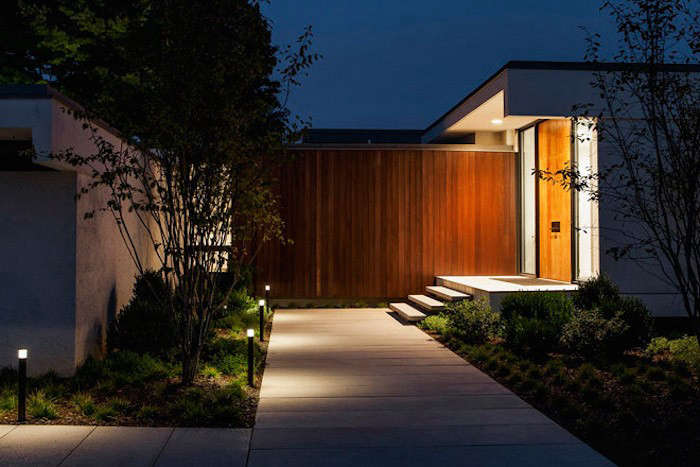
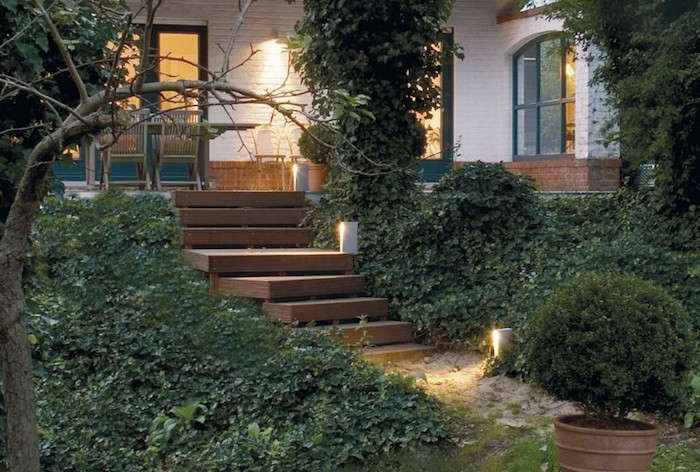





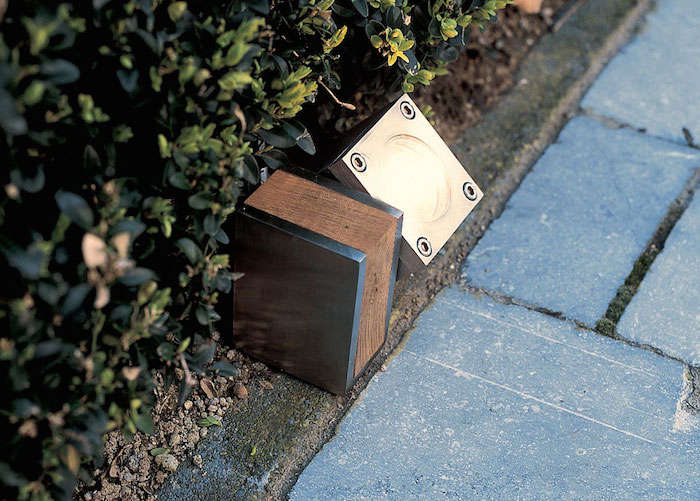

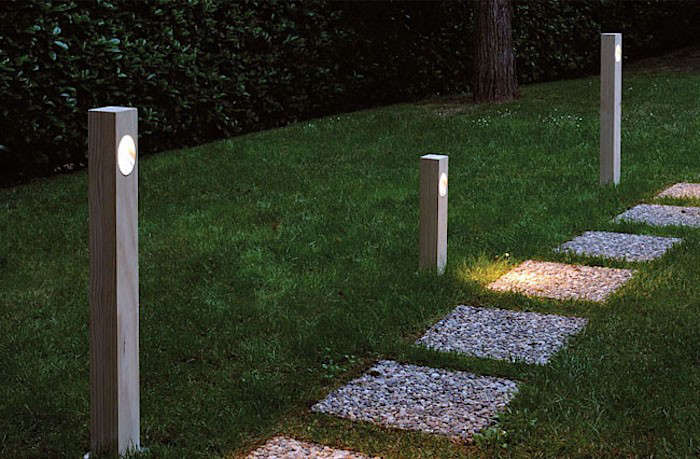



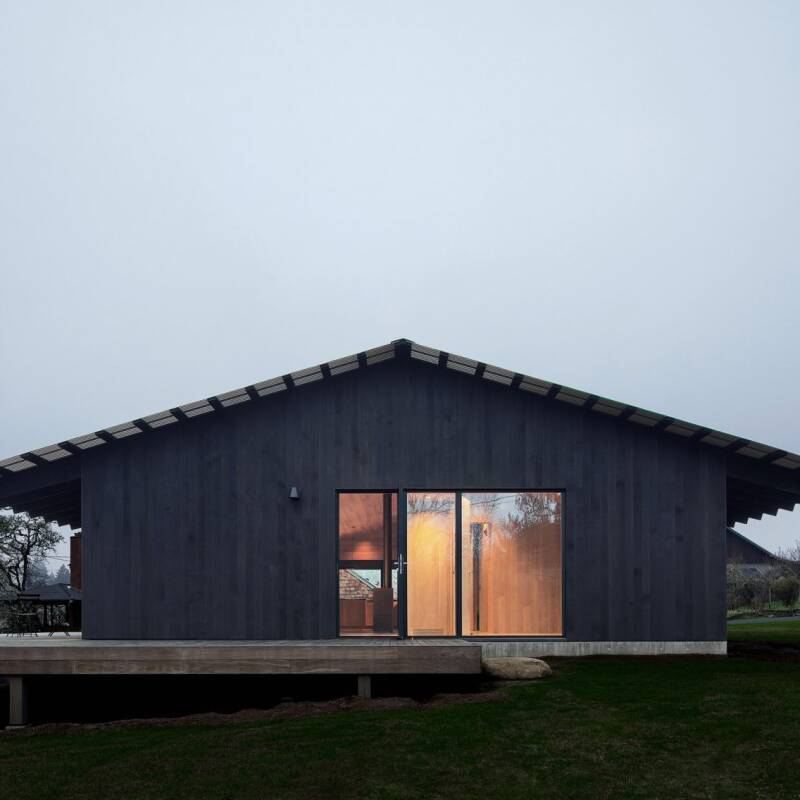





Have a Question or Comment About This Post?
Join the conversation